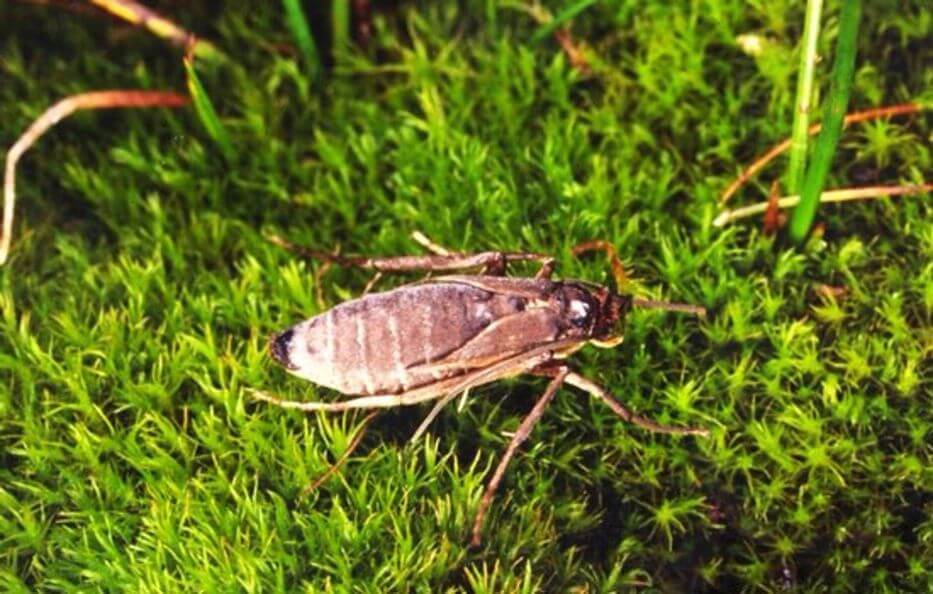165 years after it was thought of by the father of the theory of evolution, scientists have finally proved that Darwin's hypothesis about why many insects are wingless is correct - at least for the most part
By Neta Nissim, Zwata - news agency for science and the environment
On February 12 every year, "Darwin Day" is celebrated around the world, which marks the birthday of the father of the theory of evolution, Charles Darwin. Many of Darwin's hypotheses (hypotheses) have received extensive scientific support in the many years since he conceived them, but one of them, called the "Wind hypothesis" and which he developed about 165 years ago, has remained only a reasoned hypothesis until these days really.
According to this hypothesis, wingless insects are better able to thrive on windy islands than winged insects because winged insects can be swept away by the powerful wind current during storms. Darwin's reasoning for the hypothesis was somewhat lacking, but recently researchers have finally been able to prove his claim.
The question of what environmental pressures determine whether a certain insect species will develop wings or not has intrigued scientists for a long time. Darwin thought about the issue for the first time in January 1831, during his visit to Madeira, an island that belongs to Portugal and is located off the coast of Morocco. Following a cruise around the island's shores, Darwin noticed something strange: many local beetles were wingless. He suggested that if the wingless beetles were able to fly, they would have been blown off the island during a flight by the strong winds that prevailed there. Therefore, he hypothesized that wingless beetles are more adapted to this environment - and therefore, as the theory of evolution states, survive more.
Now, bNew research recently published in the scientific journal Proceedings of the Royal Society B, wind was found to have a widespread evolutionary influence on the body structure of insects, and Darwin was right - at least partially.
"The development of wings in insects allowed them to reach many new niches and colonize different habitats," says Dr. Jonathan Marsman, a researcher In the Steinhardt Museum of Nature and at the School of Zoology at Tel Aviv University under the direction of Dr. Neta Dorchin and Dr. Gal Rivak. "The wings allowed the insects to reach farther, and to adapt to the new environment."
The flight was canceled due to strong winds
In the new study, the researchers examined data collected over three decades on the different characteristics of many insects, the stability of their habitats and the climate that prevails in them (microclimate). The researchers focused on different species of insects that live in Antarctica and 28 islands in the Southern Ocean (which are located roughly halfway between Antarctica and Australia), and which are considered to be some from the most stormy places on earth.
The researchers found that about 47 percent of the insect species that evolved in the studied areas did not have wings. This is an extraordinary number - almost ten times the global prevalence of wingless insects, which is about 5 percent. They found that the strong winds in these areas, as well as the low air pressure and freezing temperatures, made flight nearly impossible for the native insects.

However, the researchers also found that, although his hypothesis was verified, Darwin was not completely right - because he believed that the evolutionary adaptations were due solely to the strength of the winds on the islands that could blow flying insects far into the ocean, while the researchers found that in addition to the direct effect of the wind, the very fact that the harsh wind conditions became Making insect flight more difficult to perform and more energetically "expensive" meant that the flying insects had less energy left to find partners, mate, produce healthy sperm, produce eggs and produce offspring. Therefore, insects without active wings that stopped investing energy in the operation of flight and in the maintenance of their energy-consuming "machines" (the wings, on their developed muscles), gained an advantage, and could direct these resources, among other things, to reproduction, thus becoming unusually dominant in this environment.
"Aviation is definitely a very 'expensive' means of transportation," says Marsman. "It is an unstable movement, and a lot of energy is needed to maintain stability and directionality in the air. On the other hand, it is effective in the aspect of utilizing time and space."
Match the wings to the food
The flight and wing characteristics of insects influence and are greatly influenced by their lifestyle, the environment they live in and their evolutionary needs. for example, in research In which Marsman deals, it will be examined how the structure of the wings and the flexibility it gives them are related to the flight style of scavengers (Scarabaeidae ), a diverse group of beetles to which most of the species known as "dung beetles" belong.
"At one end of the dung beetle specialization scale there are beetles that feed on animal dung, and fly near the food source but look for it by walking on the ground, and at the other end there are dung beetles that feed on flower pollen, which must land with great precision on the surface of the flowers," says Marsman. "In other words, there is a need for adjustments in the flight of the beetles so that they can reach the type of food they consume and use it in the most precise way."
The bugs that don't adapt
The research success in proving Darwin's hypothesis is significant because it is another example of how environments shape the animals that inhabit them. There is no doubt that in many cases animals can adapt well to their environment, even if it changes (and in the case of humans - also significantly influence it back).
However, animals, including insects, are unable to deal with any and all changes. A series of studies In recent years, they have revealed a severe damage to the insect population in the world due to human activity. In Germany, for example, a decrease of No less than 76 percent in the various insect populations in the country's nature reserves during the years 2016-1989. Similar numbers were also found in other countries around the world.

The insects are indeed small, but they are significant to the environment and to humans much more than we would think, because all terrestrial ecosystems depend on them. One of their main functions is pollination of flowers, a process on which a significant part of the agricultural crops that provide our food depends. Some insects also have a significant role in controlling agricultural pests as the natural enemies of those pests. Beyond that, they are an important layer in the food web, and damage to their frequency may affect the entire web. Various measures must be taken to ensure the preservation of the insect species at risk, such as protecting their habitats, reducing the use of pesticides andIntegration of natural habitats in the agricultural space, so that whether they fly or not - the beneficial insects will not be carried away by the wind.
More of the topic in Hayadan:
